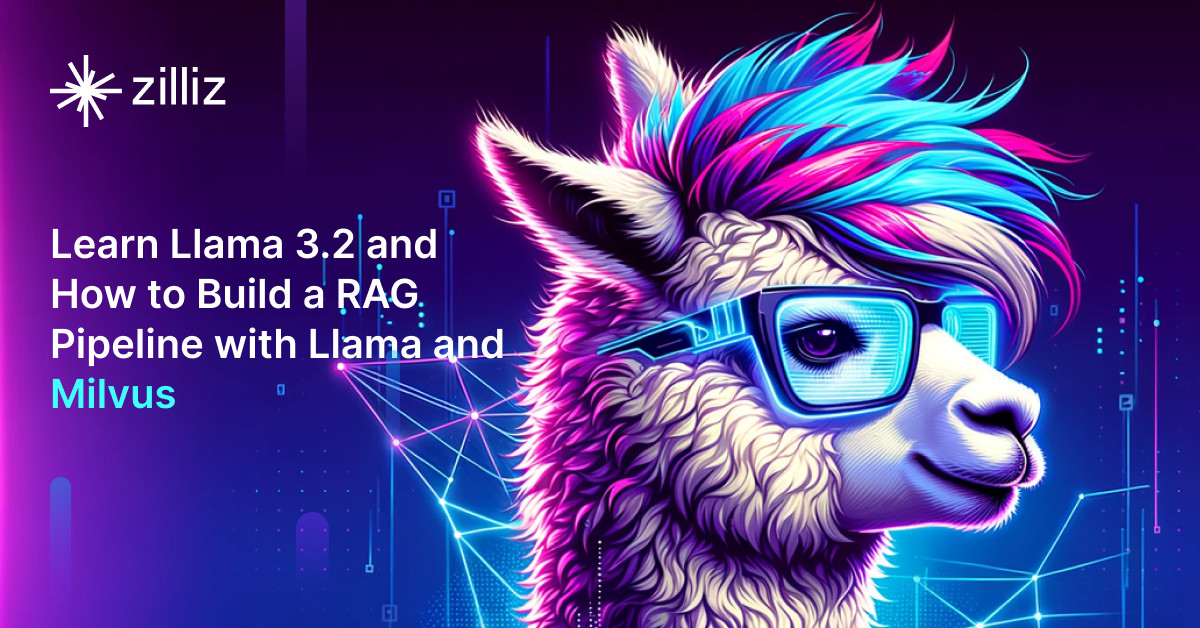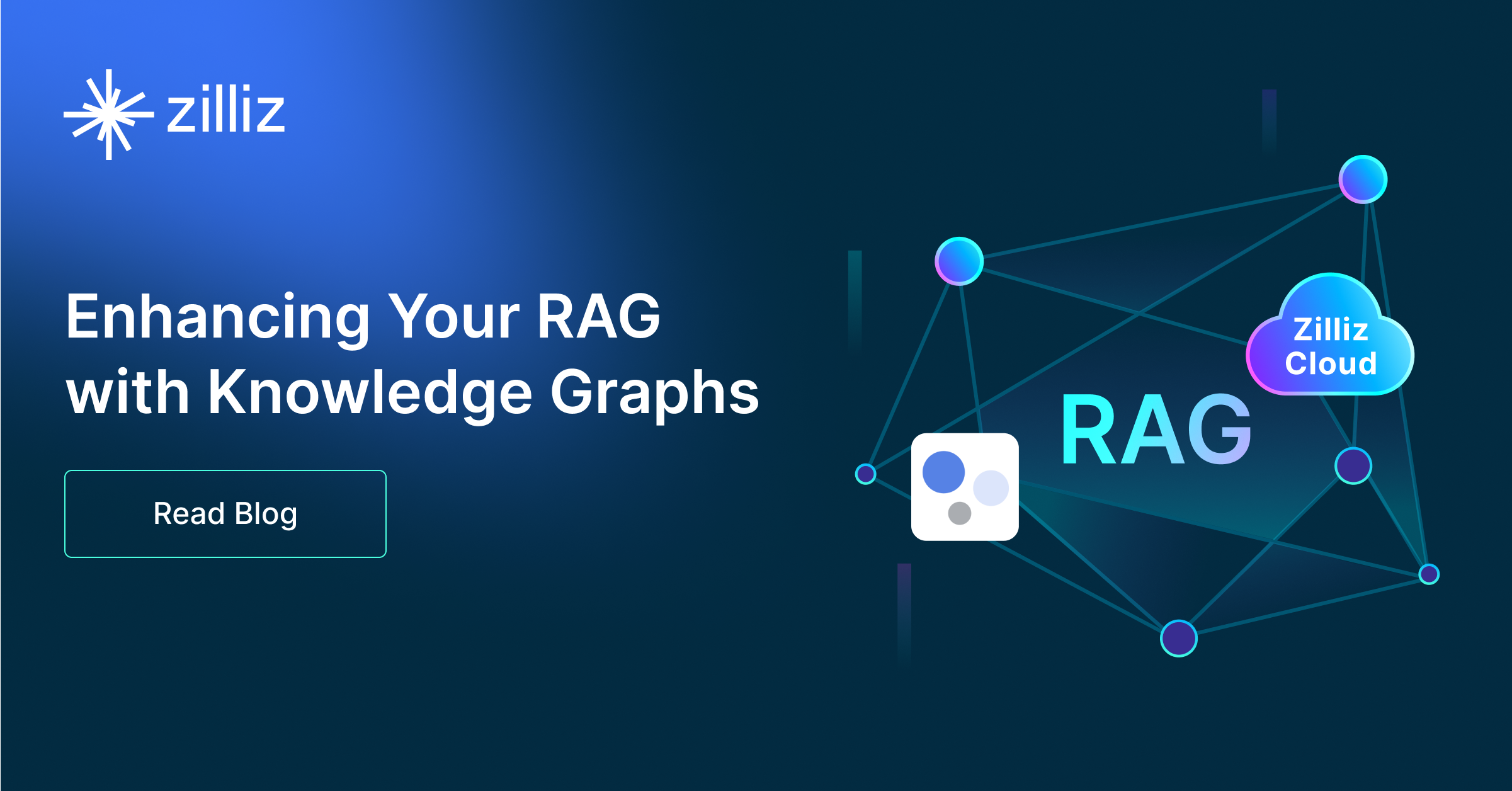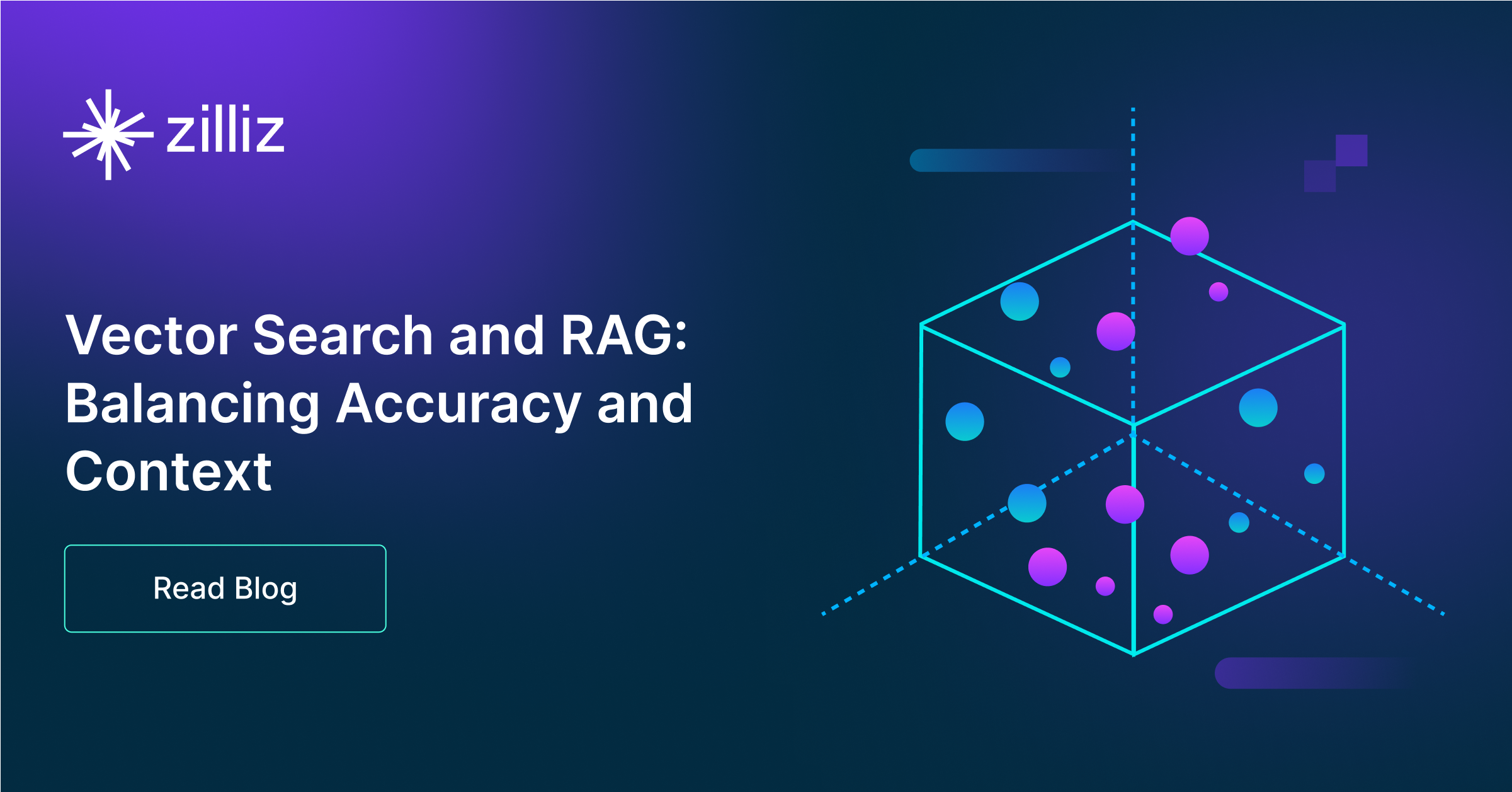Build RAG Chatbot with LangChain, pgvector, Mistral AI Mixtral 8x7B, and OpenAI text-embedding-3-small
Introduction to RAG
Retrieval-Augmented Generation (RAG) is a game-changer for GenAI applications, especially in conversational AI. It combines the power of pre-trained large language models (LLMs) like OpenAI’s GPT with external knowledge sources stored in vector databases such as Milvus and Zilliz Cloud, allowing for more accurate, contextually relevant, and up-to-date response generation. A RAG pipeline usually consists of four basic components: a vector database, an embedding model, an LLM, and a framework.
Key Components We'll Use for This RAG Chatbot
This tutorial shows you how to build a simple RAG chatbot in Python using the following components:
- LangChain: An open-source framework that helps you orchestrate the interaction between LLMs, vector stores, embedding models, etc, making it easier to integrate a RAG pipeline.
- Pgvector: an open-source extension for PostgreSQL that enables efficient storage and querying of high-dimensional vector data, essential for machine learning and AI applications. Designed to handle embeddings, it supports fast approximate nearest neighbor (ANN) searches using algorithms like HNSW and IVFFlat. Since it is just a vector search add-on to traditional search rather than a purpose-built vector database, it lacks scalability and availability and many other advanced features required by enterprise-level applications. Therefore, if you prefer a much more scalable solution or hate to manage your own infrastructure, we recommend using Zilliz Cloud, which is a fully managed vector database service built on the open-source Milvus and offers a free tier supporting up to 1 million vectors.)
- Mistral AI's Mixtral 8x7B: A cutting-edge, multi-model architecture designed to enhance performance and efficiency. It combines 8 smaller models, each with 7 billion parameters, allowing for more specialized capabilities and improved scalability. This innovative design aims to deliver faster, more accurate AI responses while maintaining resource efficiency.
- OpenAI text-embedding-3-small: This model specializes in generating high-quality text embeddings for various NLP tasks, offering a balance between performance and computational efficiency. Its strengths lie in semantic understanding and similarity comparisons, making it ideal for applications in search, recommendation systems, and clustering tasks where quick processing is essential.
By the end of this tutorial, you’ll have a functional chatbot capable of answering questions based on a custom knowledge base.
Note: Since we may use proprietary models in our tutorials, make sure you have the required API key beforehand.
Step 1: Install and Set Up LangChain
%pip install --quiet --upgrade langchain-text-splitters langchain-community langgraph
Step 2: Install and Set Up Mistral AI Mixtral 8x7B
pip install -qU "langchain[mistralai]"
import getpass
import os
if not os.environ.get("MISTRAL_API_KEY"):
os.environ["MISTRAL_API_KEY"] = getpass.getpass("Enter API key for Mistral AI: ")
from langchain.chat_models import init_chat_model
llm = init_chat_model("open-mixtral-8x7b", model_provider="mistralai")
Step 3: Install and Set Up OpenAI text-embedding-3-small
pip install -qU langchain-openai
import getpass
import os
if not os.environ.get("OPENAI_API_KEY"):
os.environ["OPENAI_API_KEY"] = getpass.getpass("Enter API key for OpenAI: ")
from langchain_openai import OpenAIEmbeddings
embeddings = OpenAIEmbeddings(model="text-embedding-3-small")
Step 4: Install and Set Up pgvector
pip install -qU langchain-postgres
from langchain_postgres import PGVector
vector_store = PGVector(
embeddings=embeddings,
collection_name="my_docs",
connection="postgresql+psycopg://...",
)
Step 5: Build a RAG Chatbot
Now that you’ve set up all components, let’s start to build a simple chatbot. We’ll use the Milvus introduction doc as a private knowledge base. You can replace it with your own dataset to customize your RAG chatbot.
import bs4
from langchain import hub
from langchain_community.document_loaders import WebBaseLoader
from langchain_core.documents import Document
from langchain_text_splitters import RecursiveCharacterTextSplitter
from langgraph.graph import START, StateGraph
from typing_extensions import List, TypedDict
# Load and chunk contents of the blog
loader = WebBaseLoader(
web_paths=("https://milvus.io/docs/overview.md",),
bs_kwargs=dict(
parse_only=bs4.SoupStrainer(
class_=("doc-style doc-post-content")
)
),
)
docs = loader.load()
text_splitter = RecursiveCharacterTextSplitter(chunk_size=1000, chunk_overlap=200)
all_splits = text_splitter.split_documents(docs)
# Index chunks
_ = vector_store.add_documents(documents=all_splits)
# Define prompt for question-answering
prompt = hub.pull("rlm/rag-prompt")
# Define state for application
class State(TypedDict):
question: str
context: List[Document]
answer: str
# Define application steps
def retrieve(state: State):
retrieved_docs = vector_store.similarity_search(state["question"])
return {"context": retrieved_docs}
def generate(state: State):
docs_content = "\n\n".join(doc.page_content for doc in state["context"])
messages = prompt.invoke({"question": state["question"], "context": docs_content})
response = llm.invoke(messages)
return {"answer": response.content}
# Compile application and test
graph_builder = StateGraph(State).add_sequence([retrieve, generate])
graph_builder.add_edge(START, "retrieve")
graph = graph_builder.compile()
Test the Chatbot
Yeah! You've built your own chatbot. Let's ask the chatbot a question.
response = graph.invoke({"question": "What data types does Milvus support?"})
print(response["answer"])
Example Output
Milvus supports various data types including sparse vectors, binary vectors, JSON, and arrays. Additionally, it handles common numerical and character types, making it versatile for different data modeling needs. This allows users to manage unstructured or multi-modal data efficiently.
Optimization Tips
As you build your RAG system, optimization is key to ensuring peak performance and efficiency. While setting up the components is an essential first step, fine-tuning each one will help you create a solution that works even better and scales seamlessly. In this section, we’ll share some practical tips for optimizing all these components, giving you the edge to build smarter, faster, and more responsive RAG applications.
LangChain optimization tips
To optimize LangChain, focus on minimizing redundant operations in your workflow by structuring your chains and agents efficiently. Use caching to avoid repeated computations, speeding up your system, and experiment with modular design to ensure that components like models or databases can be easily swapped out. This will provide both flexibility and efficiency, allowing you to quickly scale your system without unnecessary delays or complications.
pgvector optimization tips
To optimize pgvector in a Retrieval-Augmented Generation (RAG) setup, consider indexing your vectors using GiST or IVFFlat to significantly speed up search queries and improve retrieval performance. Make sure to leverage parallelization for query execution, allowing multiple queries to be processed simultaneously, especially for large datasets. Optimize memory usage by tuning the vector storage size and using compressed embeddings where possible. To further enhance query speed, implement pre-filtering techniques to narrow down search space before querying. Regularly rebuild indexes to ensure they are up to date with any new data. Fine-tune vectorization models to reduce dimensionality without sacrificing accuracy, thus improving both storage efficiency and retrieval times. Finally, manage resource allocation carefully, utilizing horizontal scaling for larger datasets and offloading intensive operations to dedicated processing units to maintain responsiveness during high-traffic periods.
Mistral AI Mixtral 8x7B optimization tips
Mixtral 8x7B is a mixture-of-experts (MoE) model, meaning only a subset of its parameters are used per query, optimizing efficiency while maintaining high performance. To maximize retrieval-augmented generation (RAG) efficiency, ensure retrieval pipelines return highly relevant context to avoid unnecessary token usage. Use adaptive chunking to provide structured and concise information, preventing retrieval of excessive or redundant data. Optimize inference speed by adjusting routing strategies, ensuring the right expert pathways are utilized efficiently. Fine-tune temperature (0.1–0.3 for factual tasks) and top-p settings to maintain response consistency. If running Mixtral in a self-hosted or API-based environment, leverage batching and parallel processing to handle high-throughput requests efficiently. When combining Mixtral with other models in a multi-tier system, use it selectively for reasoning-heavy queries while delegating simpler tasks to smaller models.
OpenAI text-embedding-3-small optimization tips
OpenAI text-embedding-3-small offers a lightweight alternative with faster processing speeds, making it well-suited for real-time RAG applications. Improve retrieval performance by fine-tuning similarity thresholds to minimize false positives in ANN searches. Keep input text concise and remove redundant information before embedding to maximize embedding efficiency. Utilize caching for frequently queried text embeddings to reduce unnecessary recomputation. When scaling, distribute embedding generation across multiple workers to optimize throughput. Apply post-processing filters, such as cosine similarity cutoffs, to refine search results. Consider hybrid search (dense + keyword-based) for improved retrieval when dealing with varied query types.
By implementing these tips across your components, you'll be able to enhance the performance and functionality of your RAG system, ensuring it’s optimized for both speed and accuracy. Keep testing, iterating, and refining your setup to stay ahead in the ever-evolving world of AI development.
RAG Cost Calculator: A Free Tool to Calculate Your Cost in Seconds
Estimating the cost of a Retrieval-Augmented Generation (RAG) pipeline involves analyzing expenses across vector storage, compute resources, and API usage. Key cost drivers include vector database queries, embedding generation, and LLM inference.
RAG Cost Calculator is a free tool that quickly estimates the cost of building a RAG pipeline, including chunking, embedding, vector storage/search, and LLM generation. It also helps you identify cost-saving opportunities and achieve up to 10x cost reduction on vector databases with the serverless option.
 Calculate your RAG cost
Calculate your RAG cost
What Have You Learned?
By diving into this tutorial, you’ve unlocked the power of building a sophisticated RAG system from the ground up! You learned how to seamlessly integrate LangChain as the backbone framework to orchestrate your pipeline, connecting the dots between retrieval and generation. With pgvector as your vector database, you now understand how to store and efficiently query embeddings at scale, ensuring your system can retrieve contextually relevant information in the blink of an eye. The magic of Mistral AI’s Mixtral 8x7B brought your application to life, enabling it to generate human-like, coherent responses by leveraging its open-source versatility and high-performance capabilities. And let’s not forget the OpenAI text-embedding-3-small model, which transformed raw text into rich, semantic embeddings, making it possible for your system to “understand” and prioritize the most meaningful data. Together, these tools form a dynamic quartet that turns unstructured data into actionable insights—proving that cutting-edge AI isn’t just for big tech companies anymore!
But you didn’t stop at the basics! The tutorial also equipped you with pro tips for optimizing your RAG pipeline, like tweaking chunk sizes for better retrieval or balancing cost and performance when scaling. Plus, that free RAG cost calculator? A game-changer for budgeting your projects without guesswork. Now that you’ve seen how these pieces fit together, imagine the possibilities: chatbots that feel eerily human, research assistants that dig up golden insights, or customer support tools that wow users. The tools are in your hands, and the best part? You’re ready to iterate, experiment, and make these systems uniquely yours. So go ahead—fire up your IDE, tweak those parameters, and build something that blows minds. The future of intelligent applications is yours to shape, one RAG-powered innovation at a time! 🚀
Further Resources
🌟 In addition to this RAG tutorial, unleash your full potential with these incredible resources to level up your RAG skills.
- How to Build a Multimodal RAG | Documentation
- How to Enhance the Performance of Your RAG Pipeline
- Graph RAG with Milvus | Documentation
- How to Evaluate RAG Applications - Zilliz Learn
- Generative AI Resource Hub | Zilliz
We'd Love to Hear What You Think!
We’d love to hear your thoughts! 🌟 Leave your questions or comments below or join our vibrant Milvus Discord community to share your experiences, ask questions, or connect with thousands of AI enthusiasts. Your journey matters to us!
If you like this tutorial, show your support by giving our Milvus GitHub repo a star ⭐—it means the world to us and inspires us to keep creating! 💖
- Introduction to RAG
- Key Components We'll Use for This RAG Chatbot
- Step 1: Install and Set Up LangChain
- Step 2: Install and Set Up Mistral AI Mixtral 8x7B
- Step 3: Install and Set Up OpenAI text-embedding-3-small
- Step 4: Install and Set Up pgvector
- Step 5: Build a RAG Chatbot
- Optimization Tips
- RAG Cost Calculator: A Free Tool to Calculate Your Cost in Seconds
- What Have You Learned?
- Further Resources
- We'd Love to Hear What You Think!
Content
Vector Database at Scale
Zilliz Cloud is a fully-managed vector database built for scale, perfect for your RAG apps.
Try Zilliz Cloud for Free


